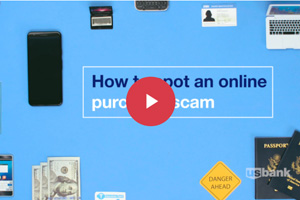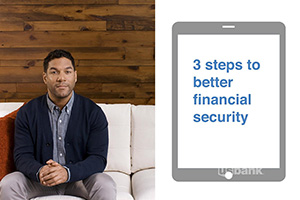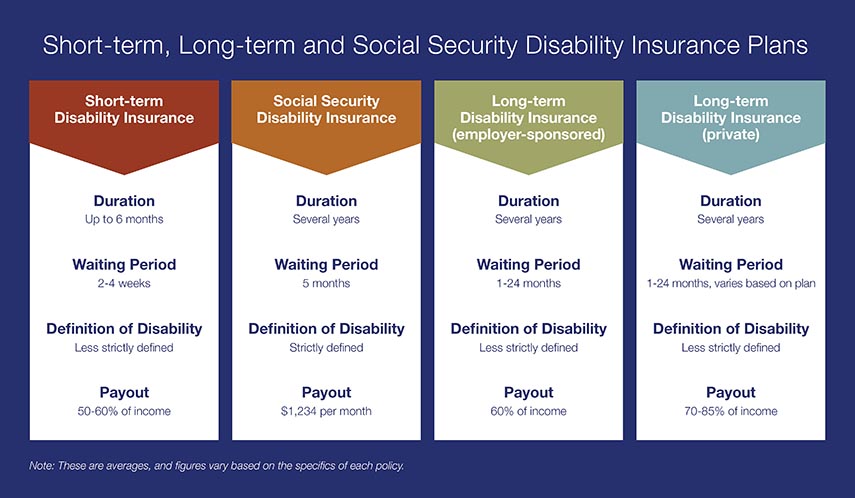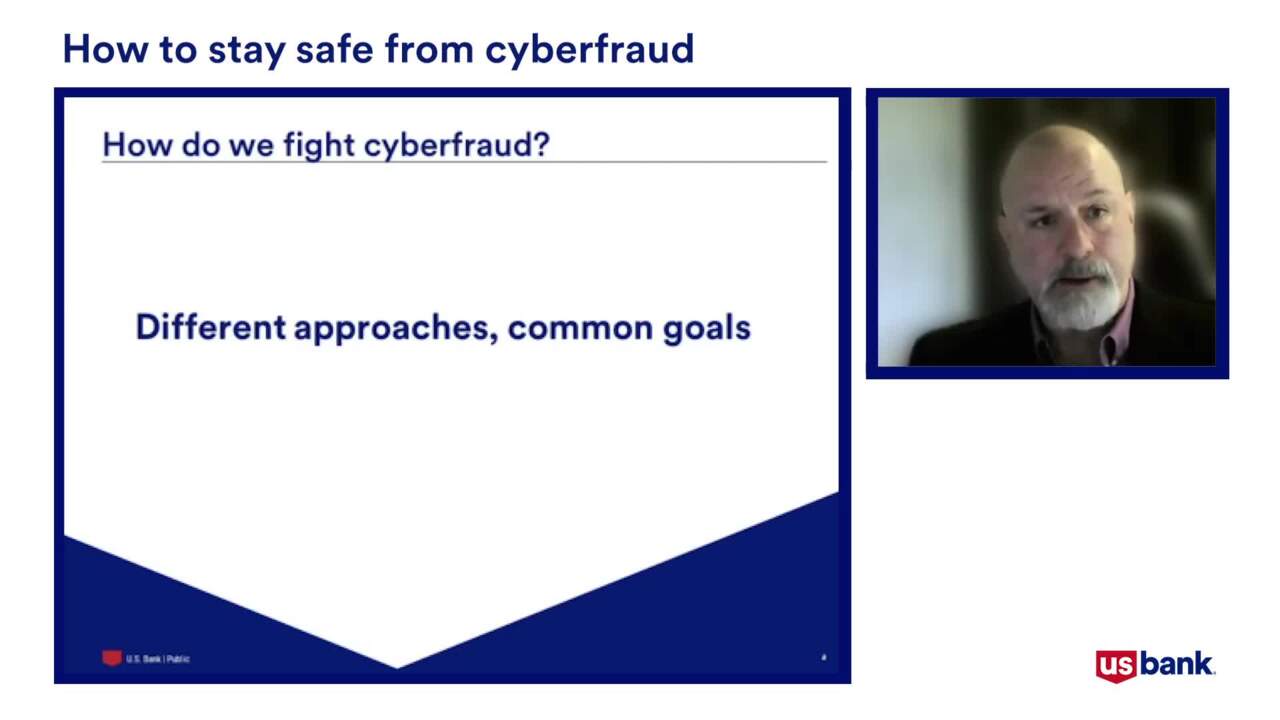Identity theft is aggravating and mystifying: You don’t always know when your identity has been stolen, you’ll almost never know who did it, and you don’t know what the full consequences of the crime will be.
Every step you take after the crime to restore your good name — not to mention to find the perpetrator — can be trying. You could spend weeks or more getting back to a normal financial life.
As soon as you believe your identity has been stolen, you need to address the issue right away. If you’ve lost a bank card or notice something fishy on a financial statement, assume a theft has happened or is imminent and take action.
If you suspect you may be a victim of identity theft, complete these tasks as soon as possible and document everything you do.
1. Call your bank and other companies where fraud occurred.
If you’re a U.S. Bank customer, contact U.S. Bank’s Fraud Liaison Center at 877-595-6256 and let them know you’ve been a victim of identity theft. Call the fraud departments of any other financial companies where you do business.
Next, call the fraud department of any companies from which the thief has made purchases. Keep in mind that the companies may suspect that you’re actually a criminal trying to hijack your accounts by pretending to be you calling about identity theft. They are likely to ask you for information — such as your address, date of birth, and/or last four digits of your Social Security number — to verify your identity before they help you.
Request written confirmation that the accounts were closed and that fraudulent transactions were canceled or are being investigated.
If nothing has been fraudulently purchased in your name, it doesn’t mean you’re in the clear. It’s safest to assume that an attack is underway, and you should immediately change your passwords and PINs.
2. Contact a credit agency to place a fraud alert.
Contact one of the three nationwide consumer credit-rating agencies (Equifax, Experian, or TransUnion) and ask them to place a fraud alert on your account. By law, each agency is required to pass the alert to the other two.
The alert requires businesses to take more stringent steps to verify the identity of anyone who applies for credit in your name. Alerts are free and valid for 90 days with one 90-day extension. There’s also a free seven-year alert that comes with two free credit reports over the next 12 months. The credit agencies remove your name from marketing lists for prescreened credit offers for five years.
Get letters from the agencies confirming the actions they’ve taken on your behalf. You can also lock down your credit reports and make it impossible for most organizations to access them — even those to which you might be applying for credit. The credit bureaus refer to this as a "freeze."
Send a record of account closings and charge corrections to the credit agencies.
3. Create an Identity Theft Affidavit.
Call the Federal Trade Commission (FTC) at 877-438-4338 or go to FTC’s identitytheft.gov. As part of this process, you will create an “Identity Theft Affidavit.” Don’t worry, you don’t need to be a lawyer. Just follow the steps and print the affidavit when you’re done. You’ll need it for the next step.
4. File a report with your local police department.
Take your Identity Theft Affidavit to your local law enforcement agency to report the incident and get the police report. Bring the affidavit, government-issued photo identification and proof of address such as a utility bill. It will help to show other proof of the theft, such as financial statements showing fraudulent charges.
5. Create your Identity Theft Report.
Combine your FTC Identity Theft Affidavit with your police report to create an Identity Theft Report.
Some or all of the people you deal with on significant financial matters — potentially for years — will want to see the report to be convinced that you are not the identity thief.
Before you catch your breath, contact your employer to have electronic paychecks redirected.
How to protect yourself from identity theft
Once you have taken the steps above, start practicing good online habits to protect yourself so identity theft won’t happen again.
1. Get organized and educate yourself to prevent identity theft.
You can prevent identity theft before it occurs by keeping your finances secure and organized. Some important preliminary steps include:
- Organize and store important documents in a safe but easily accessible location.
- Carefully consider who has access to your accounts.
- Check to see if your bank offers a way to grant trusted individuals limited access to your account to help you keep an eye out for suspicious activity. U.S. Bank, for example, offers Shared Access which lets your designated user receive their own username and password so you don't have to share your login credentials.
- Understand the risks of granting access to your accounts (joint ownership, sharing login credentials and sharing credit/debit cards can make it easier to be victimized).
- Learn about common financial exploitation schemes and ploys.
- Review options with your financial institutions to help protect your accounts.
- Discuss financial accounts only with trusted friends, family members or financial advisors.
2. Install software and app updates to prevent identity theft.
Remember to install software and app updates as soon as they’re available, as many of them fix holes in the system that hackers can get through. So when your phone or computer prompts you to update software, do so.
3. Be vigilant about password security and information sharing to prevent identity theft.
Create passwords that are difficult to figure out, and never use the same password on more than one site. Consider password management software to create and store your passwords for you. Here are some other security actions to keep in mind:
- Don’t appoint a power of attorney to someone you do not trust to act in your interest.
- Don’t share your personal information (such as credit card numbers and expiration dates, bank account numbers, birth date and Social Security number) with people or companies you don’t know.
- Never send money to people or companies you’re not familiar with.
- Don’t respond to, or pay up front for, an offer that you do not thoroughly understand.
- Don’t sign blank forms or checks.
4. Secure your Wi-Fi network to prevent identity theft.
Hackers and identity thieves can access your information through your home wifi network — especially if your router is on its default settings. Change the default password your wireless router came with.
5. Beware of phishing emails to prevent identity theft.
Never click links or open attachments in emails from unknown senders. Here are some telltale signs of phishing scams:
- A communication states that you’ve won money, a prize or a free gift — especially if you’ve never entered a raffle or drawing.
- You must pay for processing, shipping and/or taxes on your “free gift."
- You must wire or send money to assist someone in need or receive “winnings.”
- You feel pressured to act because you’ve been “selected” to receive a special offer.
- A communication requires you to respond with your full credit card or bank account number.
- You feel uncomfortable with a caregiver’s access to your accounts.
Important identity theft contacts
- Your local police department. Request a copy of the police report and case number.
- U.S. Bank Fraud Liaison Center at 877-595-6256 (for U.S. Bank accounts).
- The fraud department of any of the three credit reporting agencies to place a “fraud alert” on your credit file: Equifax 888-766-0008, Experian 888-397-3742, TransUnion 888-909-8872.
- Your bank and/or credit card company.
- Adult Protective Services (county or state).
- The Federal Trade Commission for ID theft at 877.ID.THEFT (877-438-4338).
- You can also find contact information at eldercare.gov or by calling 800-677-1116 (U.S. Administration on Aging).
If you’ve been a victim of identity theft or want to learn more about what to do if your identity is stolen or how to protect yourself from identity theft, visit the U.S. Bank Online Security Center.




























